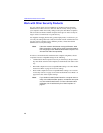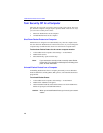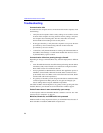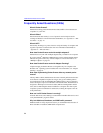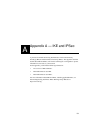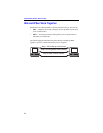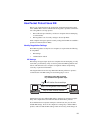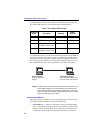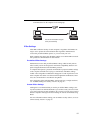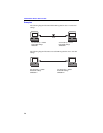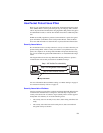
Intel® Packet Protect User’s Guide
52
Frequently Asked Questions (FAQs)
What is Packet Protect?
Packet Protect helps protect Internet Protocol (IP) traffic as it travels between
computers on your LAN.
What is IPSec?
Internet Protocol (IP) Security is a set of protocols used to help secure the
exchange of IP data. For more information about IPSec, see “Appendix A — IKE
and IPSec” on page 53.
What is IKE?
Internet Key Exchange is a protocol used to verify the identity of computers and
negotiate a protected communication. For more information about IKE, see
“Appendix A — IKE and IPSec” .
How does Packet Protect work with multiple adapters?
Packet Protect can work with multiple adapters that you install in one computer.
If you use an Intel
PRO/100 S Management or Server adapter, Packet Protect
offloads encryption tasks to any of these adapters. For more information, see
“Multiple Adapters” on page 16.
How does Packet Protect work with Adapter Teaming?
Adapter Teaming and Packet Protect work together only for computers with
Windows NT
*
operating systems installed. For more information, see “Adapter
Teaming” on page 16.
How does implementing Packet Protect affect my network perfor-
mance?
Like any IPSec solution, Packet Protect decreases network performance because
of the intense computation required to encrypt, decrypt, and validate packets.
Use Packet Protect with an Intel PRO/100 S Management or Server Adapter to
reduce the impact on processor utilization and network traffic. Packet Protect is
designed to offload processor-intensive tasks (ESP and AH algorithm calcula-
tions) to these Intel adapters that are installed in a computer. This frees up the
computer’s processor utilization for other tasks, reducing the impact to the net-
work performance.
How can I tell if Packet Protect is running?
From the Start menu, select Settings > Control Panel. Double-click Services and
verify that Intel Policy Agent is started.
Why isn’t Multicast, Broadcast, and IGMP traffic protected
Multicast traffic is always unprotected when you use Packet Protect because of
IPSec standards. In addition, IGMP traffic is unprotected.





